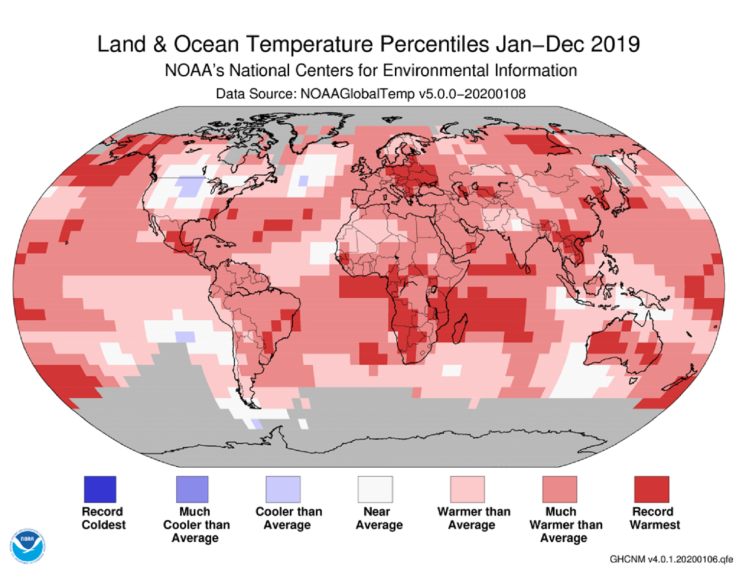NASA, NOAA: 2019 Was The Second Hottest Year On Record

KEY POINTS
- According to NASA and NOAA, 2019 was the second hottest year on record after 2016
- This means that the last decade was the hottest on record so far
- Record high temperatures were recorded in many regions
The National Aeronautics and Space Administration (NASA) and National Oceanic and Atmospheric Administration’s (NOAA) analyses of the Earth’s global surface temperatures in 2019 revealed that it was the second hottest year in 140 years. Different regions experienced different levels of warming, but many countries experienced 2019 as one of their hottest years on record.
2019 Global Temperatures
NASA and the NOAA just released their analyses of 2019 global temperatures and the results showed the continuation of the planet’s long-term warming trends. NASA noted that global temperatures were 1.8 degrees Fahrenheit (0.98 degrees Celsius) warmer than 1951 to 1980, while the NOAA noted that 2019 was 1.7 degrees Fahrenheit (0.95 degrees Celsius) warmer than the 20th-century average.
This means that 2019 is now second to 2016 as the hottest year on record, and is the 43rd consecutive year with global land and ocean temperatures that are nominally above the 20th-century average. According to NASA's Goddard Institute for Space Studies (GISS) Director Gavin Schmidt, this makes the decade that just ended the warmest on record so far.
“Every decade since the 1960s clearly has been warmer than the one before,” Schmidt said. “We crossed over into more than 2 degrees Fahrenheit warming territory in 2015 and we are unlikely to go back. This shows that what's happening is persistent, not a fluke due to some weather phenomenon: we know that the long-term trends are being driven by the increasing levels of greenhouse gases in the atmosphere," he went on.
Regional Temperatures
Overall, 2019 was characterized by warmer than average temperatures, with record high temperatures being recorded in parts of Asia, Europe, Australia, Madagascar, southern Africa, North America, New Zealand, and eastern South America.
For instance, temperatures from June to November in Mexico ranked among the four highest for the respective months, with August being the warmest August on record for the country. Meanwhile, Austria logged 2019 as its third warmest year since national records began in 1776, and Europe logged 2019 as its second warmest year after 2018.
The year 2019 was the third warmest year for France, but it was the warmest year for Australia in its 110-year record. As for Asia, 2019 was its third warmest year on record, with Hong Kong logging its warmest year and 36 stations across Japan setting new all-time maximum temperatures.
North America was the only continent that did not log an annual temperature that ranked among its three highest on record.
Carbon Emissions
NASA concluded that the temperature increase has been driven by increased human-made carbon and greenhouse gas emissions. With rising temperatures in the oceans and the atmosphere, Greenland and Antarctica continue to experience mass loss, and extreme events such as heatwaves and wildfires continue to increase.
© Copyright IBTimes 2025. All rights reserved.






















